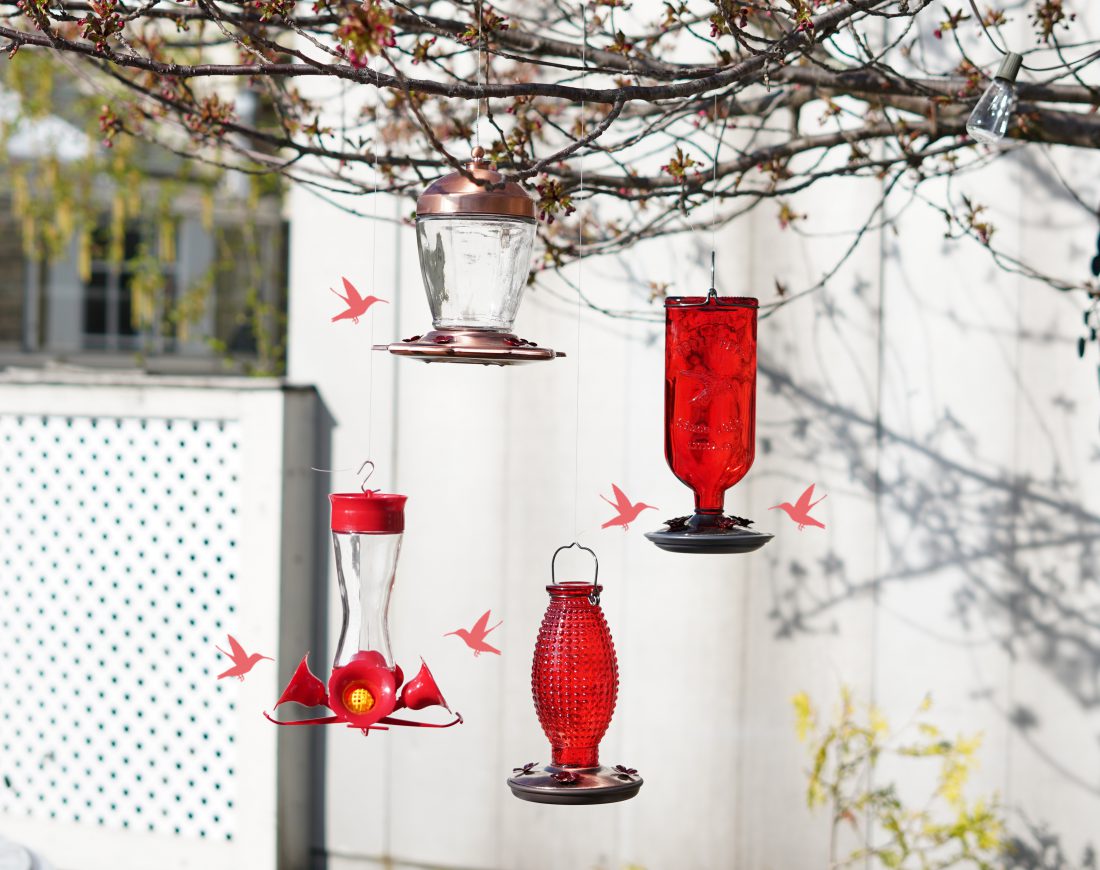April 15, 2021
It’s time to put out your hummingbird feeders!
info from Hummingbird Central
Hummingbirds spend the winter in Central America or Mexico, and migrate north to their breeding grounds in the southern U.S. and western states as early as February, and to areas further north later in the spring. This is usually around the end of April for New England. The first arrivals in spring are usually males. Some, however, do not migrate, in areas like California and the upper Pacific coast.
The Migration
Although there are differing views in the birding community as to what triggers the start of migration, it is generally thought that hummingbirds sense changes in daylight duration, and changes in the abundance of flowers, nectar and insects. Instinct also plays a role in making the decision to migrate.
During migration, a hummingbird’s heart beats up to 1,260 times a minute, and its wings flap 15 to 80 times a second. To support this high energy level, a hummingbird will typically gain 25-40% of their body weight before they start migration in order to make the long trek over land, and water.
They fly alone, often on the same path they have flown earlier in their life, and fly low, just above tree tops or water. Young hummingbirds must navigate without parental guidance.
Hummingbirds fly by day when nectar sources such as flowers are more abundant. Flying low allows the birds to see, and stop at, food supplies along the way. They are also experts at using tail winds to help reach their destination faster and by consuming less energy and body fat. Research indicates a hummingbird can travel as much as 23 miles in one day.
The importance of feeding
With sightings in New England already, it’s an important time to make sure your yard is ready to feed the migrating hummingbirds. Stops along the way may be for a few minutes, or a few days at more favorable locations with abundant food supplies. Feeding hummingbirds is an easy, rewarding and inexpensive experience. All you need is a feeder, table sugar and water. We have a variety of feeders specifically designed for hummingbirds that allows easy access, easy filling and easy cleaning. Feeders are usually bright in color to make spotting them from afar easy! Place the feeder in a shady spot so the nectar will last longer, out of reach of pets or other critters. Remember, hummingbirds will not feed if ants, bees or other insects are feeding from. This is why it is imperative to use a feeder specifically designed for hummingbirds. We sell hummingbird feeders that make it difficult for pests like ants to find the nectar. The best placement is in front of a window so you can catch a glimpse of the hummingbirds from inside!
Unlike other birds, hummingbirds feed on nectar, not seed. In nature, they eat flower nectar of energy and insects for protein. They are naturally attracted by a number of flowering plants that allow easy access to the nectar. In early Spring where flowering plants are less available, feeders provide the nutrition hummingbirds require along their migration paths. We sell prepared nectar, or you can do it yourself at home!
<iframe src=”https://www.google.com/maps/d/embed?mid=1w0lSxgG5eT0iOthtJfebp-uhk2n0oqRf” width=”640″ height=”480″></iframe>

